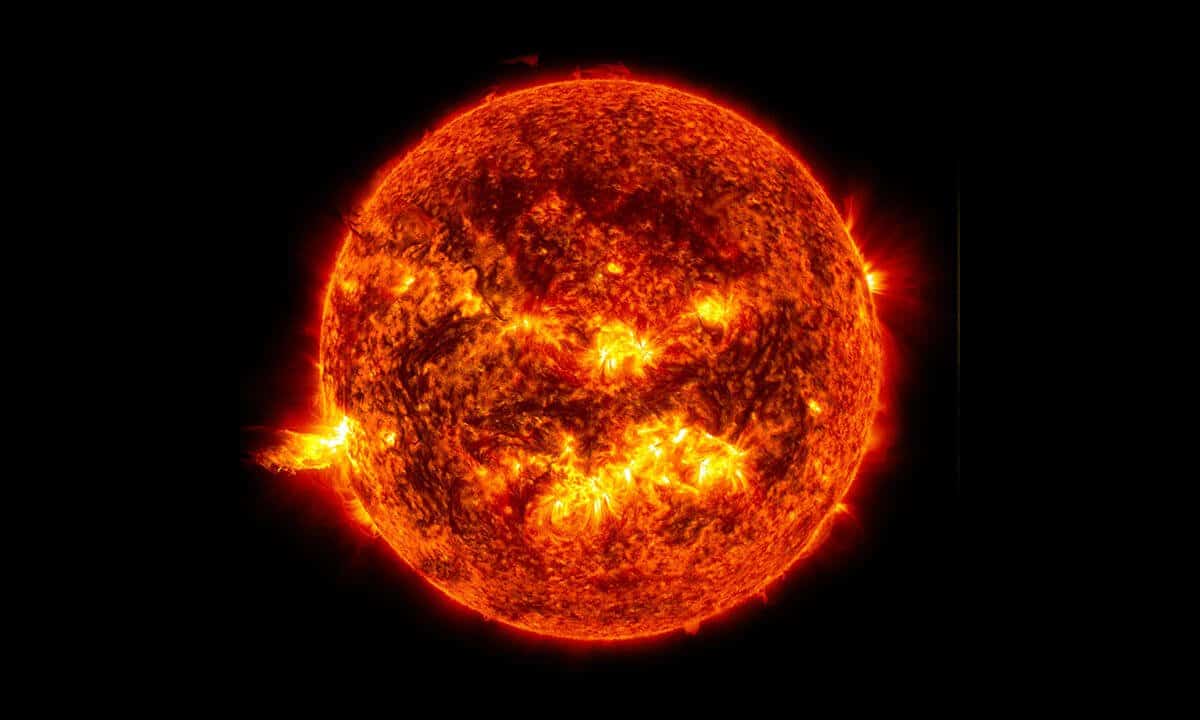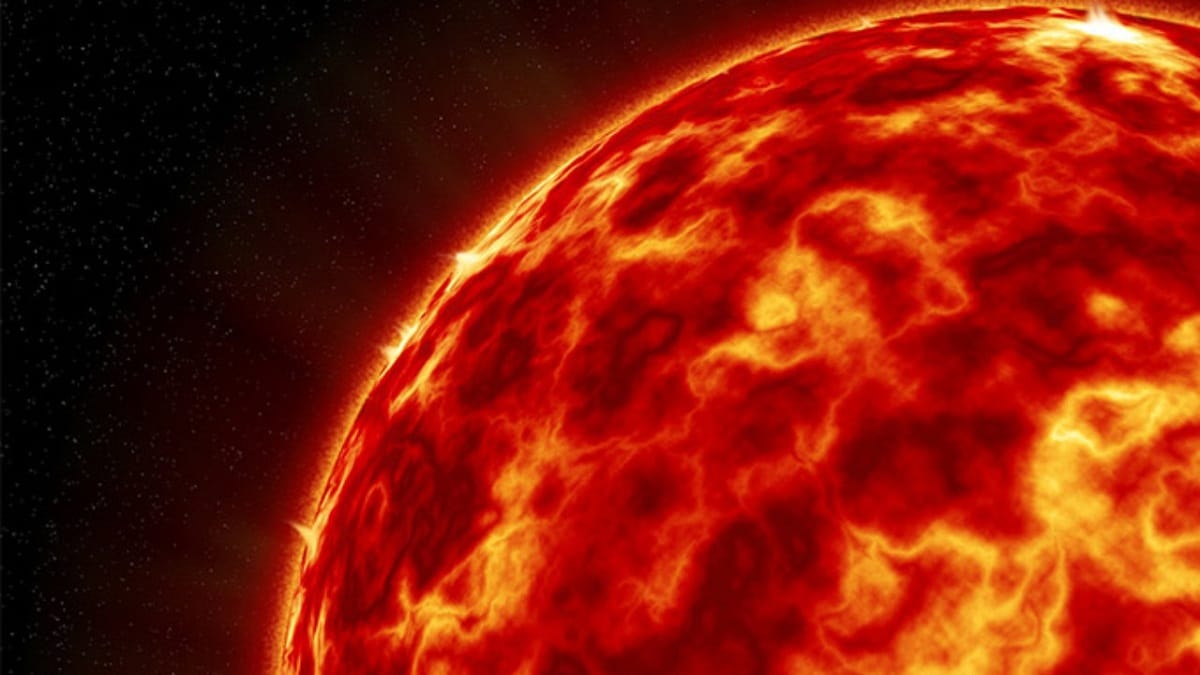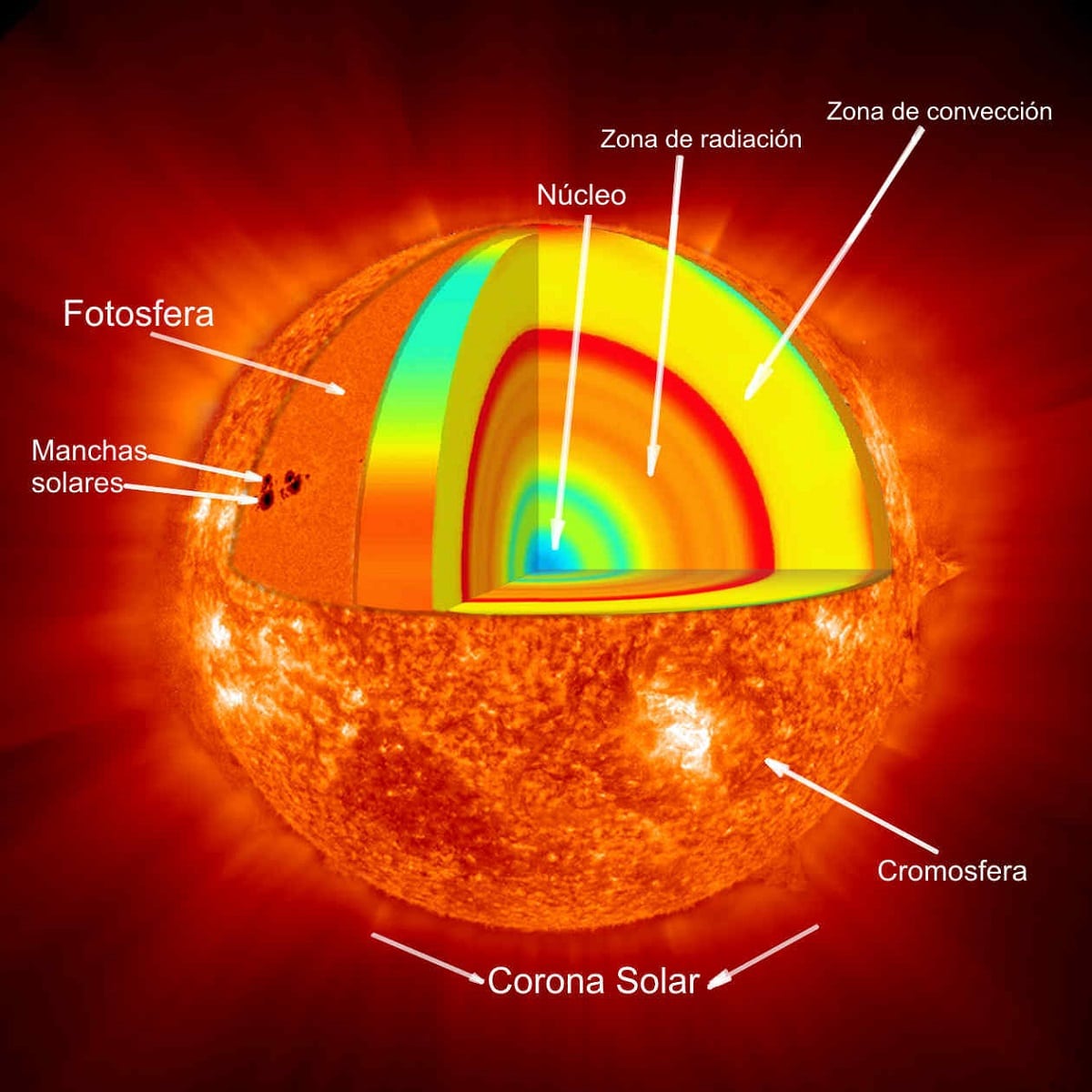
The sun is the closest star to earth, 149,6 million kilometers from earth. All the planets in the solar system are attracted by its enormous gravity, orbiting it at different distances, just like the comets and asteroids we know. The sun is commonly known by the name of Astro Rey. many people do not know well how is the sun composed.
For this reason, we are going to dedicate this article to tell you how the sun is composed, its characteristics and importance for life.
Key features

This is a fairly common star in our galaxy: it is neither very big nor small compared to its millions of sisters. Scientifically, the Sun is classified as a G2-type yellow dwarf.
It is currently in its main life sequence. It is located in the outer region of the Milky Way, in one of its spiral arms, 26.000 light-years from the center of the Milky Way. However, the size of the sun represents 99% of the mass of the entire solar system, which is equivalent to about 743 times the mass of all the planets in the solar system combined, and about 330.000 times the mass of our earth.
With a diameter of 1,4 million kilometers, it is the largest and brightest object in Earth's sky. That is why their presence makes the difference between day and night. For others, the sun is a giant ball of plasma, almost round. It consists mainly of hydrogen (74,9%) and helium (23,8%), with a small amount (2%) of heavy elements such as oxygen, carbon, neon, and iron.
Hydrogen is the main fuel of the sun. However, as it burns, it turns into helium, leaving behind a layer of helium "ash" as the star develops through its main life cycle.
How is the Sun made up?

The Sun is a spherical star whose poles are slightly flattened due to the rotational movement. Although it is a massive and continuous hydrogen fusion atomic bomb, the enormous gravitational pull that its mass gives it counteracts the thrust of the internal explosion, reaching an equilibrium that allows it to continue.
The sun is structured in layers, more or less like an onion. These layers are:
- Core. The innermost region of the Sun, comprising one fifth of the entire star: its total radius is about 139.000 km. That is where the gigantic atomic explosion of hydrogen fusion takes place, but the gravitational pull of the sun's core is so great that the energy produced in this way takes about a million years to reach the surface.
- Radiation area. It is made up of plasma, that is, gases such as helium and/or ionized hydrogen, and it is the region most likely to radiate energy to the outer layers, which considerably reduces the temperatures recorded in this place.
- convection zone. This is a region where the gas is no longer ionized, making it difficult for energy (in the form of photons) to escape from the sun. This means that energy can only escape through thermal convection, which is much slower. As a result, the solar fluid is heated unevenly, causing expansion, loss of density, and rising or falling currents, much like internal tides.
- Photosphere. The region where the sun emits visible light, although a transparent layer some 100 to 200 kilometers deep, appears as bright grains on a darker surface. It is believed to be the surface of the star and where sunspots appear.
- Chromosphere: This is the name given to the outer layer of the photosphere itself, which is even more translucent and difficult to see because it is obscured by the shine of the previous layer. It measures about 10.000 kilometers in diameter and can be seen during a solar eclipse with a reddish appearance.
- Crown. This is the name given to the thinnest layer of the Sun's outer atmosphere, where the temperature is significantly higher relative to the inner layers. This is the mystery of the solar system. However, there is a low density of matter and a strong magnetic field, energy and matter passing at very high speeds, and many X-rays.
Temperature
As we have seen, the Sun's temperature varies depending on the region in which the star resides, even though all stars are incredibly hot by our standards. In the core of the Sun, temperatures close to 1,36 x 106 degrees Kelvin can be recorded (that's about 15 million degrees Celsius), while on the surface the temperature "barely" drops to 5.778 K (about 5.505 °C). ) and goes back up to 2 x Corona of 105 Kelvin.
The importance of the Sun for life

Through its constant emission of electromagnetic radiation, including light perceived by our eyes, the Sun warms and illuminates our planet, making life as we know it possible. Therefore, the sun is irreplaceable.
Its light enables photosynthesis, without which the atmosphere would not have as much oxygen as we need and plant life would not be able to support the different food chains. On the other hand, its heat stabilizes the climate, allows liquid water to exist, and provides energy for different weather cycles.
Finally, the sun's gravity keeps the planets in orbit, including Earth. Without it there would be no day or night, no seasons, and Earth would surely be a cold, dead planet like many of the outer planets. This is reflected in human culture: in almost all known mythologies, The sun usually occupies a central place in the religious imaginary as the father god of fertility. All the great gods, kings or messiahs are associated in one way or another with their splendor, while death, nothingness and evil or the secret arts are associated with the night and its nocturnal activities.
I hope that with this information you can learn more about how the Sun is composed and its importance.